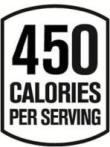Nutrition Keys: Will They Make America Healthier?

Almost 40% of Americans don't read the Nutrition Facts panel, according to a study conducted by Nicholas J. Ollberding, PhD, Randi L. Wolf, PhD, and Isobel Contento, PhD, of Columbia University and published in the Journal of the American Dietetic Association. What's more, 50% don't read the list of ingredients, 53% don't pay attention to serving size and 56% don't glance at health claims. This is an issue.
Although there were significant differences in the quality of nutrient intake observed between food label readers and non-readers, food labels are only as good as the amount that they are read.
"If the food label is to have a greater public health impact, rates of use will likely need to be increased among U.S. adults," commented Professor Ollberding. "Low rates of label use also suggest that national campaigns or modification of the food label may be needed to reduce the proportion of the population not using this information."
Maybe Professor Ollberding's prayers have been answered: In late January, the GMA (Grocery Manufacturers Association) released news of its new and improved "Nutrition Keys" for consumers. In an effort to fight childhood obesity and raise awareness among consumers, the group has designed an "abridged" version of the Nutrition Facts panel that seemingly overwhelms the masses. There are three versions we have to look forward to:
Standard: This option is standard and displays information regarding calories, saturated fat, sodium and sugar content per serving. These four nutrition keys are always displayed together.
![Nutrition Keys]()
Nutrition Keys Calorie Option: On packages that are small, manufacturers have the option of just displaying the calories per serving.
![Nutrition Keys Calories]()
Nutrition Keys Calories Expanded Option: This is an expanded version that displays the four nutrition keys mentioned above, plus two extra keys to market other "positive" nutrients in the food. These two additional keys can change depending on what nutrients are found in the food. These "nutrients to encourage" can only be placed on a package if the product has more than 10 percent of the daily value per serving of the nutrient.

Personally, I think these labels only tell half the story. Essentially, they are the "Cliff Notes" of Nutrition Labels. Granted, the four nutrition keys in the first option are important, but so are fiber, protein and fat content on the whole. Further, these don't give the consumer any information on the quality of ingredients in the product. So, if they don't take the time to look at the Ingredient List, they could be consuming chemicals, artificial ingredients, preservatives, and other unhealthy items.
Although I commend GMA for attempting to simplify the label, I can't help but wonder if we are just enabling laziness by not educating children (and adults) on how to properly read nutrition labels. This is a life skill and if an individual cares about their health and wellbeing, and if we care about the health of our nation as a whole, is a part of everyday life.
Do you think these labels will do the job? Do you know how to read the "old" versions?

Understand Nutrition Labels! In Get Real and Stop Dieting! - I teach you how to read nutrition labels so that you can make healthier choices! Get it Now!
Related Topics:


